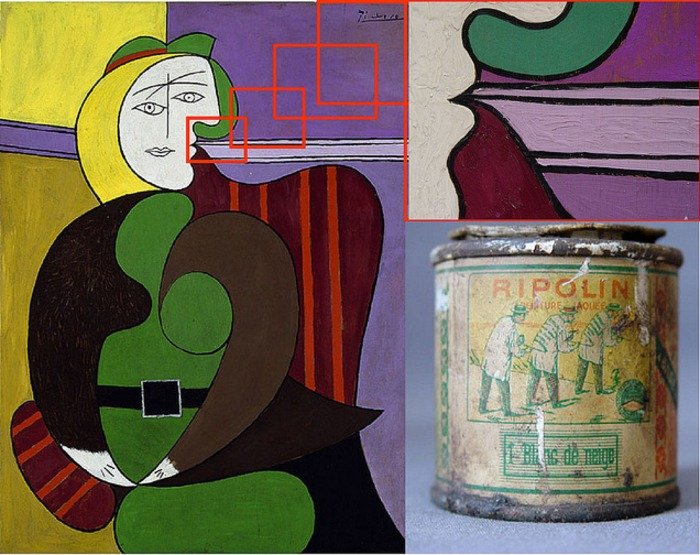Among the Picasso paintings in the Art Institute of Chicago collection, The Red Armchair is the most emblematic of his Ripolin usage and is the painting that was examined at Argonne National Laboratory. Credit: Art Institute of Chicago, Gift of Mr. and Mrs. Daniel Saidenberg (AIC 1957.72) © Estate of Pablo Picasso / Artists Rights Society (ARS), New York
LEMONT, Ill., Feb. 7 (UPI) -- U.S. researchers say new evidence in the debate among scholars about the kind of paint Picasso used to create his masterpieces points to ordinary house paint.
The Art Institute of Chicago, working with the Argonne National Laboratory, says the findings add significant weight to the widely held theory Picasso was one of the first master painters to use common house paint rather than traditional artists' paint.
The researchers, using a unique high-energy X-ray instrument, called the hard X-ray nanoprobe, to examine samples from Picasso paintings, determined the chemical makeup of paint he used matched the chemical makeup of the first commercial house paint, Ripolin.
That switch in paint gave birth to a new style of art marked by canvasses covered in glossy images with marbling, muted edges, and occasional errant paint drips but devoid of brush marks, the art experts said.
Fast-drying enamel house paint enabled this dramatic departure from the slow-drying, heavily blended oil paintings that dominated the art world until Picasso's time.
Earlier attempts to examine Picasso's paint choice failed because traditional tools wouldn't let investigators see deeply enough into the layers of paint or with enough resolution, the researchers said.
"Appearances can deceive, so this is where art can benefit from scientific research," study co-author Francesca Casadio of the Art Institute of Chicago said in a release from the Argonne lab Thursday. "We needed to reverse-engineer the paint so that we could figure out if there was a fingerprint that we could then go look for in the pictures around the world that are suspected to be painted with Ripolin, the first commercial brand of house paint."















